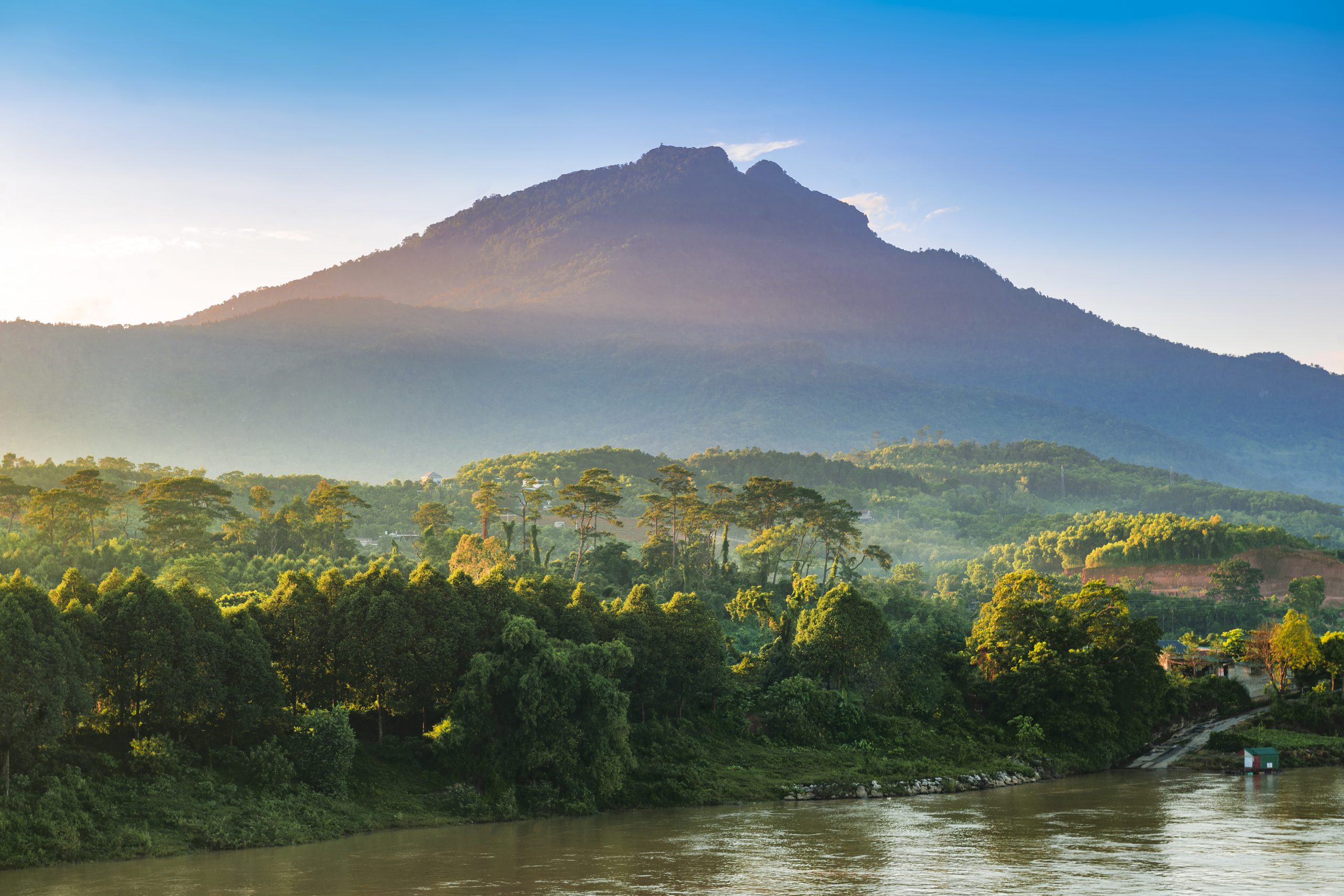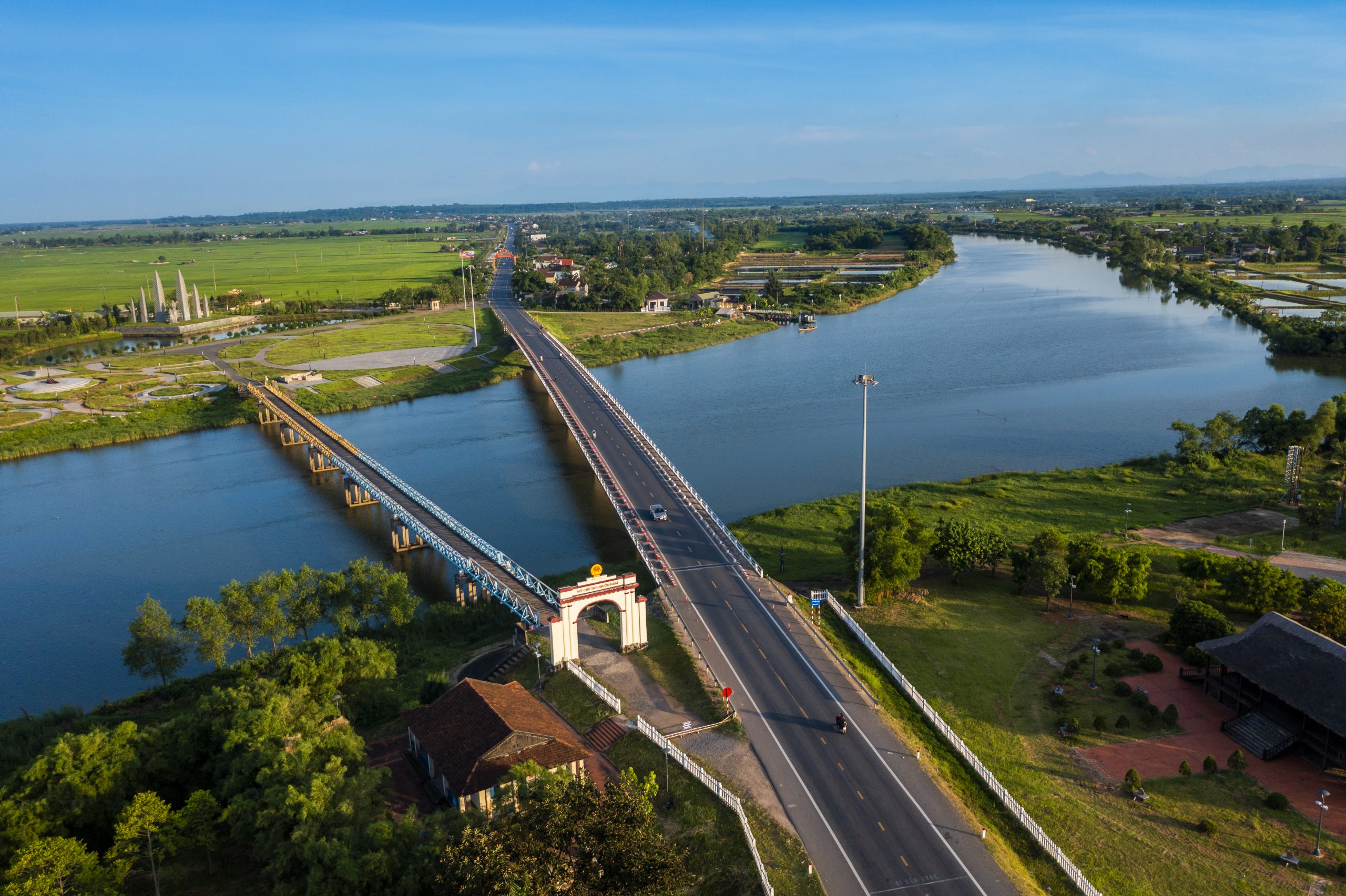Truong Quy
“Here stands the Bach Dang River, the heroic river of the descendants of Dragons and Fairies, of heroes from across the country!” This is the opening line of composer Luu Huu Phuoc’s song about the Bach Dang River, inspired by the nation’s founding myth and accounts of the river battles waged by long-ago dynasties to maintain our country’s unity and independence. Vietnam’s diverse cultures all share a close connection to its sprawling rivers. Each river has supported human life for thousands of years. Each river tells a story, extending the rich saga of Vietnam.

Bach Dang, the supreme river
Vietnam boasts over 2,000 rivers that span more than 10 kilometers each, with more than 100 major rivers serving as key water sources and waterways. Centuries ago, when roads and transportation were limited, these waterways played a vital role in the country’s development. Let’s begin with the Cai (Mother) River, now commonly known as the Red River. On Vietnamese soil alone, this river stretches over 510 kilometers. As the longest river in the North, the Red River witnessed the rise and fall of kingdoms and played a crucial role in the development of the ancient Vietnamese civilization. It earned its iconic status as a witness to history and became an enduring symbol of a unique country. When Ly Cong Uan moved the capital from Hoa Lu to Dai La in 1010, he traveled via rivers. According to an ancient myth, he witnessed clouds in the shapes of dragons rising into the sky and named the new capital Thang Long – or “Soaring Dragon”.
The two largest tributaries of the Red River – the Lo River and the Da River – also etched their names into modern history as they witnessed the first victories of the Vietnam People’s Army between 1947 and 1948 during the country’s resistance against French colonialism. Musicians inspired by the revolution penned thousands of songs about these events. For instance, Van Cao wrote: “Lo River! Undulating waves of Viet Bac, stretching fields of corn and reeds, and the somber jungle! The lonely dock stands amid golden waves and blurry houses, drowned in the color of the autumn mist.” The poet Che Lan Vien called the Bach Dang River “the river that all others aspire to be” when describing the Victory of Bach Dang, a symbol of Vietnam’s resistance against foreign invaders. The Bach Dang River witnessed naval battles between Ngo Quyen and the Southern Han army in the 10th century; between Le Hoan and the Song army in the 11th century; and most remarkably between the Tran dynasty and the Mongol-Yuan invaders in the 13th century. During these final battles, stakes made from Erythrophleum fordii were placed in the riverbed to impale the invaders’ boats. By ambushing the enemy’s fleet and trapping them on the wooden stakes, the Dai Viet army secured victory. Today, the Bach Dang River stands as a branch in a dense river system in the estuary between Quang Ninh and Hai Phong, adjacent to Ha Long Bay, among the most attractive economic and tourism areas in Vietnam.
Preserving peace along these banks The North Central region connects to the Northern Delta through the deltas of the Ma River and the Chu River, which are home to traces of prehistoric settlements and historically famous political centers including the Tay Do Citadel of the Ho Dynasty, the Lam Kinh Citadel of the Le Dynasty, and the homeland of the Trinh and Nguyen Lords. The Lam River and the La River in Nghe An – Ha Tinh are associated with generations of scholars. From this point onward, the narrow strip of land known as the Central Region is divided by many short rivers that serve as landmarks, marking the journey of Vietnamese people as they expanded southward. Throughout history, many of these short rivers became boundaries. The Gianh River was the border between Dang Trong and Dang Ngoai, while starting in 1954, the Ben Hai River divided Vietnam for over 20 years.
Not far from the Ben Hai River, the Thach Han River runs through the ancient citadel of Quang Tri. Here, fierce battles took place in the summer of 1972, leaving tragic stories tied to the river and thousands of fallen soldiers. “Please pull lightly on your oars as you boat on the Thach Han! My friends are resting there, on the riverbed. Their youth was spent amid the waves. They will forever keep the peace for these banks,” wrote Le Ba Duong.
Moving further south, the Huong River constitutes the soul of the ancient capital of Hue, calmly contrasting with the city’s turbulent past and providing respite from the harsh climate of the Central Region. This river’s links to the history of the Nguyen dynasty began in the 17th century, when the Nguyen Lords founded Dang Trong with Phu Xuan as their capital, later known as Hue.
Also in the Center, the Han River flows into the estuary of Danang Bay, while rivers like the Thu Bon River and the Tra Khuc carry traces of history along their banks.

Endless currents
The river that once served as a landmark in the South, the Dong Nai River, is also the longest river in Vietnam, spanning 586 kilometers. A vision of an endless river was captured in the following folk verse: “Nha Be River’s water split in two/ Make haste, those who leave for Gia Dinh, Dong Nai.” Along the Dong Nai River, bustling towns like Cu Lao Pho and landmarks like Tran Bien and Gia Dinh have stood for more than three centuries. The history of Vietnam’s largest city, Saigon – Ho Chi Minh City, began with the establishment of Gia Dinh in 1698 at the Nha Be crossing, where a section of the Dong Nai River is also known as the Soai Rap River.
In truth, the history of the Southern rivers and their associated civilizations dates back two millennia, as evidenced by sites of the Funan and Oc Eo cultures in the Mekong Delta. Names like Go Thap and Dong Thap Muoi evoke the distant past. The name Cuu Long (Nine Dragons) reflects the Vietnamese people’s understanding of the geography of the lower branches of the Mekong River. This river waters the largest rice granary in Vietnam and carries within it the history that has shaped Vietnam into what it is today, spanning from Nam Quan to Ca Mau Cape.
The over 2,000 rivers flowing through Vietnam have shaped the historical memory of the people. As well as carrying rich alluvium, these rivers also deposit cultural layers, akin to historical records. The song “Chay di song oi” (Flow, oh great river) by Pho Duc Phuong beautifully captures this sentiment: “The river knows the life stories of all and flows without end.”










